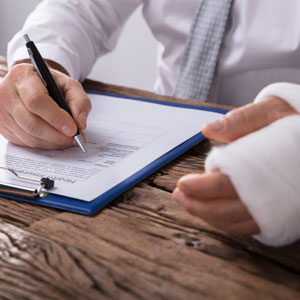Call Now To Learn More About Your Legal Rights
(479) 750-2334(Calls Answered 24/7) OR Text Us:
(479) 358-1998
In this article, you can discover…
The strongest personal injury cases are the ones with the most and best evidence. Photos help visually explain what a medical record can’t adequately drive home to a judge. A photo can help demonstrate just how serious, affecting, and ugly the injury was.
An injury journal can do the same. This is a written record of how the injury has impacted you in your day-to-day life. It’s more personal and can help show a court what you have gone through as an injured party on a human, relatable level.
An injury journal should rate pain day by day, and record how the pain and how the injury impacts your day to day life. You can document the emotional frustrations of not being able to achieve daily tasks, missing time with friends or family, or missing important milestones due to the injury.
These days, weeks, and months or records help drive home what you can no longer do and serve to document the timeline of your injury accurately. This is far more helpful than struggling to remember details two or three years after an accident.
Document the beginning, middle, and end of the injury. Photograph the injury right after it has happened. Photograph it the day after. Photograph the injury as it heals, and photograph the injury after it’s healed and becomes a scar.
There are jury instructions in Arkansas to consider scarring or disfigurement, so photos of scarring are helpful.
Photograph everything. Your attorney can help you sift through photographs to exclude images that would hurt your case or minimize the extent of your injury. It’s best to err on the side of over-disclosure, as more evidence is always better than scant evidence.
While the desire to share your injury and inform friends and family via social media can be strong, avoid posting about your injury on social media. No text-based descriptions of the accident or injury, and no photographs, either.
The defense will often hunt through social media to find evidence that an injury is not severe or that your activities are too intense for the extent of the injury you’ve suffered. The less you post on social media following your accident, the better.
Once you’ve settled your claim, you can take the opportunity to share what happened to you and how it’s impacted you. In the meantime, however, keep social media activity limited, don’t post about your injury or accident, and avoid uploading personal images or videos that might be used to minimize your case.
Chronological order is best. Beginning, middle, and end. A timeline of what happened, what you went through, what it looked like, how it felt, and what you couldn’t do is going to offer the clearest explanation of your injuries to your attorneys and to a judge.
There was a specific case where we had a tentative settlement offer, but the client hadn’t signed a release yet. In the meantime, the client forwarded a picture that he meant to send sooner of an injury-related scar he had. We were able to use that picture, send it in, and get twice as much as the insurance company was initially willing to settle for.
For more information on Documenting Your Injuries In Arkansas, an initial consultation is your next best step. Get the information and legal answers you are seeking by calling (479) 750-2334 today.